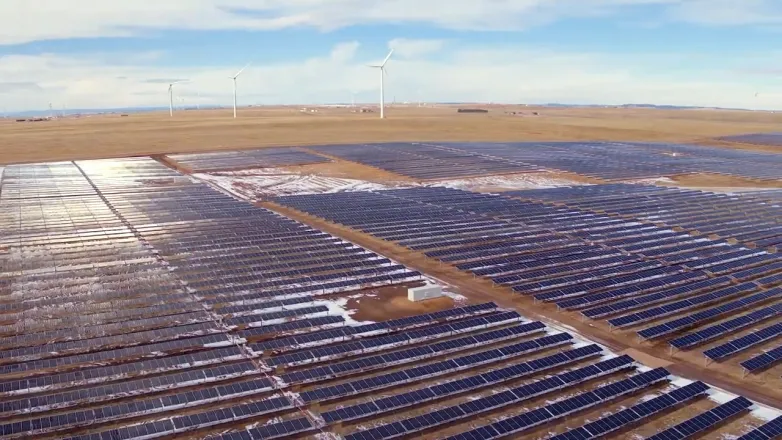Colorado Springs Utilities launches largest solar field to date
- It wasn’t as easy as flipping a switch but, when Colorado Springs Utilities (CSU) brought it’s newest and largest solar panel field online, it quadrupled how much energy it generates from the sun.

“It’s building blocks as we move forward,” said CEO Aram Benyamin.
The 278-acre Grazing Yak solar project outside of Calhan will generate 35 megawatts of electricity to CSU customers from 119,000 solar panels. It adds on to 10 megawatts of solar energy from the Clear Springs Ranch.
By spring, the Palmer Solar Project outside of Fountain will add another 60 megawatts of solar energy, powering an estimated 35,000 homes. Grazing Yak provides the equivalent of 13,000 homes.
“The industry has been stagnant for many, many decades. I mean, basically, we had a model that we followed for decades,” Benyamin said. “We generated, we transmitted, and we used the energy at the end. I think this is an exciting time for us to actually think through these issues that are going to be challenged.”
Come the spring, nearly 17% of the energy CSU generates will be from renewable sources.
CSU’s plan is to bring another 150-megawatt solar project online that will include a 25mw battery, the largest of its kind in Colorado.
Benyamin said it makes financial sense.
“The pricing is very competitive,” said Benyamin. “We are looking at this as a complete transformation.”
Grazing Yak began its 25-year career as the United Nation released its tenth annual report into Climate Change, which detailed the steps needed to limit global warming from human-caused climate change to 1.5 to 2 degrees Celcius.
The report calls for global emissions to be cut by 55 percent from 2018 levels by 2030. By 2050, 85 percent of energy should be generated from renewable sources in order to limit global warming.
CSU is not governed by the UN, but it needs to follow state regulations.
Last spring, Colorado Governor Jared Polis signed a bill into law that calls for a 50 percent reduction of emissions by 2030 and 90 percent by 2050, when compared to 2005 levels.
“Compliance is something that we have to live with but, I think the position we have is we can do better than just complying with the rules, you can do something much better for the ratepayers,” said Benyamin.
Also read


